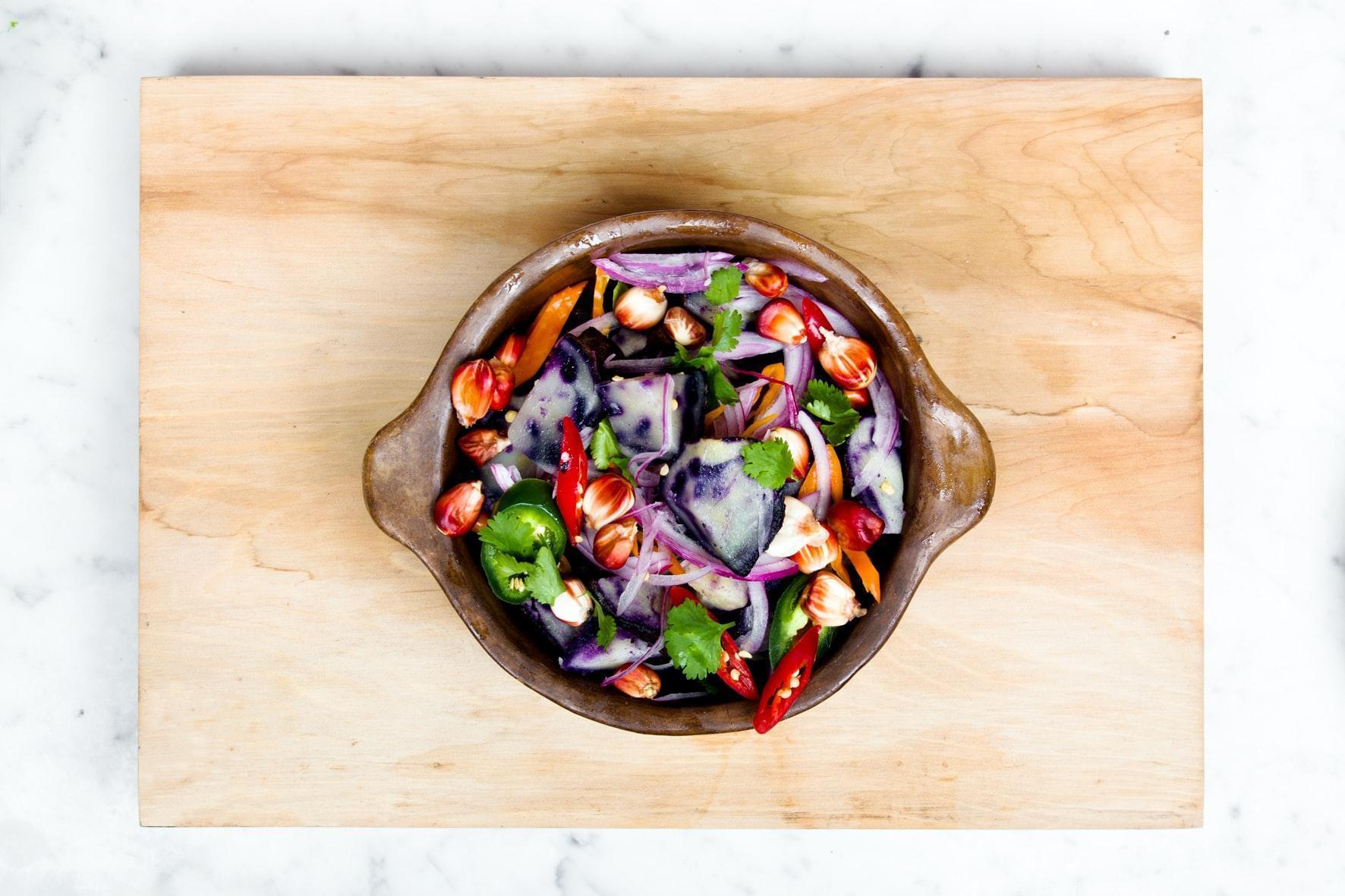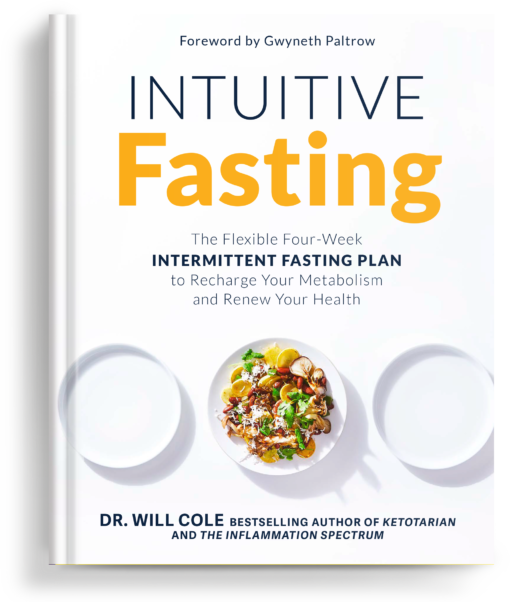OMAD: The One Meal A Day Plan For Calmed Inflammation + Increased Longevity

Here, I want to tell you about one special way to do time-restricted feeding (or intermittent fasting). It may be the easiest way of all. It is something called OMAD.
OMAD sounds super exotic, but it simply stands for “One Meal A Day” (we love acronyms in wellness). An OMAD plan is what we call a 23:1 fasting-to-eating window, which means fasting for 23 hours and eating all your food (and getting all your calories) in just one hour. Normally this involves waiting until dinner to break your OMAD fast, but some people prefer to eat breakfast or lunch only. Ultimately, it could be any meal at any time, as long as it happens within just one hour of your 24-hour day. (Technically, it could also be a 22:2 plan, if you eat your meal in a leisurely manner, or just very slowly).
People typically do OMAD to improve health, lose weight, or both. But does it work? Is OMAD something worth trying, or is it better to avoid it at all costs? Let’s look at some things to consider.
ARTICLE CONTINUES BELOW
Make Your Life a Cleanse
SUBSCRIBER-ONLY GUIDES FOR GUT HEALTH, VIBRANT ENERGY, HEALTHY FOOD & CLEAN ALCOHOL
Get FREE access to these + giveaways, recipes, & discount codes in personal emails from Dr. Will Cole.
OMAD pros
1. Longer fasting means deeper fasting benefits
Because OMAD is a more advanced way to practice intermittent fasting, it gives you a chance to get in on all the research-backed benefits of fasting, such as:
- Increased human growth hormone (HGH) levels. (1) When you fast, your levels of this muscle-building, fat-burning hormone go up.
- Lowered inflammation levels. (1) Fasting is known for its ability to reduce inflammation. When you aren’t eating, your body can divert its energy towards repair.
- Decreased disease risks. (1) Fasting is also associated with a decrease in health issues related to inflammation, as well as better blood sugar control, metabolic health, and even reduced cancer risk.
- Increased autophagy pathways (cellular recycling and repair). (1) When you don’t eat, your body repairs and detoxifies, cleaning up dead cells and debris.
These reasons may be enough to convince you to try OMAD, but there’s more! Another key benefit of fasting techniques like OMAD is that they encourage a shift (2) into nutritional ketosis (burning fat for energy instead of glucose). Nutritional ketosis has its own anti-inflammatory, fat-burning, and autophagy benefits. Because OMAD is a longer fast, it tends to maximize these benefits. Longer fasting windows give the body longer periods of time to enhance all the benefits of fasting – shorter fasts still have benefits, but they won’t be as profound.
2. Simplicity and convenience
Another great thing about OMAD (OMAD benefits), when it comes to simplicity, is how little planning is involved – because there is only one meal to plan for! The only real question, beyond what to eat for that single meal, is when to break your fast, to make sure the meal you eat will have enough calories and nutrients for the day. If you are seeking a life less focused on consumption, you may just become an OMAD superfan!
OMAD cons (and how to avoid them)
1. Insufficient calories and nutrients
Even though you are going 23 hours without eating, you still need enough calories and nutrients in your one meal to sustain you, especially if you are doing OMAD long-term. The solution? Figure out how many calories and nutrients you need for your age, weight, and activity level, then make sure your one big meal of the day is full of nutrient-dense real food. Fasting protocols like OMAD are best paired with good foods, like lots of vegetables, fruit, high quality protein, and plenty of healthy fats. Your one meal shouldn’t be made up of junk and empty calories, or you could suffer health consequences. You can’t fast your way out of a poor diet.
2. It may not be for people who have an unhealthy relationship with food
For people who struggle with an unhealthy relationship with food (such as people who struggle with, or have struggled with, eating disorders like anorexia, orthorexia, or bulimia), OMAD can exacerbate these conditions. The notion of not eating could trigger pre-existing negative thoughts and habits in some people, and in some cases, following strict dietary rules or fasting can be symptoms of an eating disorder disguised as a wellness practice. This is the antithesis of the intent of intermittent fasting. Fasting techniques like OMAD are not for punishing yourself. They should be used as a way to love your body enough to take care of it. OMAD is not about restriction. It’s about timing, and rejuvenation, and health. You can’t heal a body you hate. If OMAD (or any other way of fasting, time-restricted feeding, or dieting) is turning into an unhealthy obsession, feels out of balance, or causes a fear of food or fear of “breaking the rules,” stop. It is not right for you.
3. It can be trickier for women
When it comes to intermittent fasting, women are usually more sensitive than men. This is, at least in part, due to the fact that women have more kisspeptin, (3) a neuropeptide which can create a stronger reaction to fasting. If it is overdone for any particular individual, it can impact hormonal balance, cycles, and possibly metabolism and fertility. This is a new area that needs more research, but the key here is to find a fasting schedule that works for your body. The amount of time you can fast may be different than the amount of time someone else can fast – everyone has their own tolerance. Check in with your body and assess how you feel when you try any type of fasting. For a full guide on how intermittent fasting can affect hormones, read my article on the subject.
OMAD rules, tips and tricks
What are the rules of OMAD?
As previously mentioned, there is only one rule for this radically simple strategy - eat only one meal a day. This will look different for different people and may take some time to find what time of day to eat and what food combinations work best for you.
OMAD tips
Some people are going to start OMAD and not miss a beat. However, for the majority of people, OMAD can take some time getting used to - even for people who are used to periods of fasting. If you are just starting out on your OMAD journey, follow these tips to ensure a smooth transition.
1. Do it on rest days / non-workout days
Exercise requires a lot of energy from your body and if you are physically active, it’s likely your body will require more nutrients and calories than the average person. While you may be able to get away with doing OMAD on days you workout, start by doing OMAD on non-workout days. Then as your body acclimates and you understand your caloric needs you may be able to expand your OMAD days to workout days.
2. Incorporate electrolytes
Electrolytes are essential for our bodies to function optimally with deficiencies leading to weakness, fatigue, headache, cramps, cognitive function and more. They are especially important when fasting because your body not only expels electrolytes at an increased rate, but they can help regulate appetite and curb cravings. Electrolytes can make the difference between feeling great or miserable while fasting.
3. Assess your one meal
I often find that my patients who are struggling with fasting either aren’t eating enough calories or they aren’t eating the right ratio of macronutrients. While carbohydrates are great for giving you quick energy, your body burns through them quickly leaving you crashing and hangry until your next meal. Healthy fats on the other hand, are a clean, slow-burning source of fuel for your body.
Focus on incorporating more healthy fats into your one meal and consider looking into a food tracking app that can help you calculate how many calories you should be eating.
What should you eat on OMAD?
Every person’s specific dietary and caloric needs are going to be different. Ultimately, when eating your one meal for the day you’ll want to make sure it includes clean, whole food sources and not a lot of added sugar or processed foods. After all, the idea behind OMAD is to help facilitate healing and optimal health - we don’t want what you are eating to negate the benefits.
Start by understanding your personal caloric needs and then build a meal that reaches that amount with healthy fats, clean protein, and carbohydrates while taking any food intolerances or sensitivities into account.
I personally like to break my fast with a cup of bone broth or a simple bone broth soup to ease my gut into the digestion process. Then after 15-30 minutes I’ll have my main meal. THis usually looks something like two grass-fed burgers on top of a large salad with avocado and roasted sweet potatoes and cauliflower on the side.
To learn more about fasting, how to work your way up to an OMAD fast, and what to eat when breaking your fast, check out my book Intuitive Fasting.
The way I OMAD
I like to switch up my fasting methods. I love doing OMAD some days, especially when I am traveling. OMAD is an easy way to mitigate the health hazards of flying (like airport food, jet lag, and air pressure changes, which can be hard on digestion). It’s also easier not to think about eating when you are on the move. I stay hydrated with lots of water, and I love to sip on Earl Grey tea during my OMAD fast because it enhances autophagy. I feel great on those days and enjoy it. Crazy, right? But I don’t do it every day, and I have had many patients over the years who do well peppering their life with occasional OMAD days.
On other days, I choose different intermittent fasting windows, and sometimes I eat three regular meals and don’t fast at all. There is a grace and lightness to my fasting, and I believe this should be the case for anyone who wants to do fasting in a healthy and sustainable way.
The bottom line is that OMAD (and any other type of fasting) shouldn’t be stressful or miserable. The right way to fast is to do the type of fast that works for you and your body – that makes you feel better, not worse. Don’t force something if it’s not making you feel good or right.
But OMAD isn’t necessarily for beginners. If you are new to fasting, I suggest starting with shorter feeding windows, such as eating within an eight hour period at first, then slowly reducing it to six hours, five, four…until you feel like you can easily eat one meal a day every now and then. And if your diet isn’t a healthy one right now, I suggest backing up even further and focusing on eating real foods and getting the junk (like processed sugar and refined carbs) out of your diet first.
Learn how to eat and feel satiated by good real food for a while before you explore fasting protocols. This will build a strong foundation on which to build your fasting. Focus on healthy fats, clean protein, and vegetables, with as few added sweeteners as possible. This will be a great natural transition to fasting (here are some meal ideas). This will also help to stabilize your blood sugar and help you to become more fat-adapted. Eventually, this can make fasting happen naturally, as nutrient-dense, low-sugar, fat-burning diets tend to decrease appetite due to how filling and satisfying they are. When you are well-fed, nourished, and no longer hangry, OMAD (and other fasting windows) will happen effortlessly.
As one of the first functional medicine telehealth clinics in the world, we provide webcam health consultations for people around the globe.
Photo: unsplash.com
Start Your Health Journey Today
FUNCTIONAL MEDICINE CONSULTATIONS FOR PEOPLE AROUND THE WORLD
- Marinac CR, Sears DD, Natarajan L, Gallo LC, Breen CI, Patterson RE. Frequency and Circadian Timing of Eating May Influence Biomarkers of Inflammation and Insulin Resistance Associated with Breast Cancer Risk. PLoS One. 2015;10(8):e0136240. Published 2015 Aug 25. doi:10.1371/journal.pone.0136240
- Collier R. Intermittent fasting: the science of going without. CMAJ. 2013;185(9):E363-E364. doi:10.1503/cmaj.109-4451
- Zeydabadi Nejad S, Ramezani Tehrani F, Zadeh-Vakili A. The Role of Kisspeptin in Female Reproduction. Int J Endocrinol Metab. 2017;15(3):e44337. Published 2017 Apr 22. doi:10.5812/ijem.44337
The information on this website has not been evaluated by the Food & Drug Administration or any other medical body. We do not aim to diagnose, treat, cure or prevent any illness or disease. Information is shared for educational purposes only. You must consult your doctor before acting on any content on this website, especially if you are pregnant, nursing, taking medication, or have a medical condition.
Our content may include products that have been independently chosen and recommended by Dr. Will Cole and our editors. If you purchase something mentioned in this article, we may earn a small commission.

BY DR. WILL COLE
Dr. Will Cole, DNM, IFMCP, DC is a leading functional medicine expert who consults people around the globe, starting one of the first functional medicine telehealth centers in the world. Named one of the top 50 functional and integrative doctors in the nation, Dr. Will Cole provides a functional medicine approach for thyroid issues, autoimmune conditions, hormonal imbalances, digestive disorders, and brain problems. He is also the host of the popular The Art of Being Well podcast and the New York Times bestselling author of Intuitive Fasting, Ketotarian, Gut Feelings, and The Inflammation Spectrum.

Gut Feelings
Healing The Shame-Fueled Relationship
Between What You Eat And How You Feel

